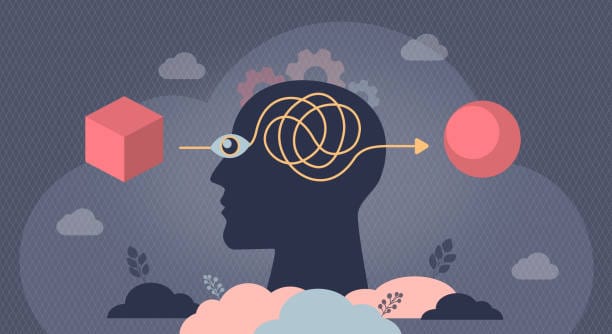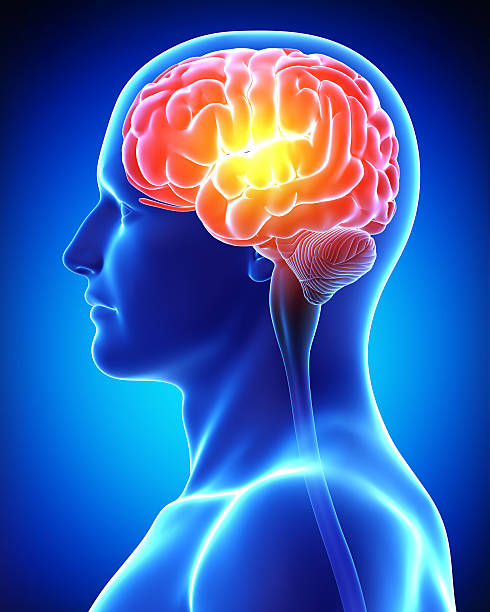Every human brain is a masterpiece of evolution, a living network of billions of neurons firing in intricate patterns. This incredible organ allows us to imagine distant futures, recall childhood memories, fall in love, solve mathematical puzzles, and compose music. But for all its brilliance, the brain has a hidden flaw: it does not always show us reality as it is.
Instead, it acts like a storyteller — a storyteller that can be surprisingly unreliable. The brain fills in gaps with its own interpretations, prioritizes certain information while ignoring other pieces, and bends facts to fit pre-existing beliefs. These mental distortions are not random errors; they are patterns, systematic deviations from logical thinking that psychologists call cognitive biases.
Cognitive biases are not the exclusive domain of the careless or the uneducated. They affect everyone — scientists, judges, doctors, investors, parents, students, and world leaders alike. They are baked into the human mental operating system. Understanding them is like pulling back the curtain to reveal the hidden puppeteers tugging at the strings of our decisions, emotions, and beliefs.
Why the Brain Chooses Shortcuts
To understand why cognitive biases exist, we have to take a step back into our evolutionary past. Our ancestors were not wired for a world of stock markets, political debates, or social media feeds. They lived in environments where quick decisions could mean the difference between survival and death.
Imagine an early human standing on the savannah, hearing a rustle in the grass. There’s no time for slow, logical analysis. It might be the wind — or it might be a lion. A quick mental shortcut — “Rustle equals danger, run!” — could save a life. In such a world, fast, intuitive thinking often beat slow, deliberate reasoning.
These shortcuts, known as heuristics, are still part of us. They work brilliantly in certain contexts, allowing us to make snap judgments without wasting energy on endless analysis. But in the modern world, where most threats are not lions but complex, abstract problems, these shortcuts can mislead us. That’s when they morph into biases.
How Cognitive Biases Shape Our Everyday Lives
Cognitive biases are not rare mental hiccups; they are constant companions, quietly influencing what we notice, how we interpret events, and what decisions we make. They color our perception of people, politics, risks, opportunities, and even ourselves.
They can convince us we are better drivers than average, even when statistics say that half of us must be below average. They can make us cling to a failing investment, convinced it will turn around if we just wait a little longer. They can push us to favor information that confirms our beliefs while ignoring evidence that challenges them.
These distortions are so persuasive because they feel natural. We rarely notice them operating. They whisper in our minds in the voice of common sense. Outsmarting them requires a deliberate effort — one that begins with shining light into their shadows.
The Seductive Pull of Confirmation
One of the most powerful biases is the tendency to seek out and favor information that aligns with what we already believe. This confirmation bias acts like a mental filter, letting through only those facts and opinions that fit neatly into our worldview while rejecting or downplaying conflicting data.
It explains why two people can watch the same news broadcast and walk away with entirely different conclusions. Our brains are not neutral observers; they are active interpreters, weaving narratives that make us feel consistent and right.
The danger of confirmation bias is that it builds intellectual echo chambers. Inside these chambers, we feel reassured but increasingly cut off from reality. Outsmarting this bias requires a conscious choice to seek disconfirming evidence — to read the opposing viewpoint, to ask ourselves, “What would make me change my mind?”
When First Impressions Lock the Frame
Another silent manipulator of our thinking is the anchoring effect. The first piece of information we receive about a topic becomes a reference point — an anchor — that shapes all subsequent judgments, even if that first piece is irrelevant or misleading.
A classic example comes from negotiations. If the first price mentioned for a car is $20,000, even if that price is inflated, every counteroffer will likely revolve around that figure. The anchor pulls our sense of what’s reasonable toward it.
This effect extends far beyond money. First impressions of people can serve as anchors, affecting how we interpret their later actions. Outsmarting anchoring means deliberately questioning the first information we encounter, asking, “Is this initial number or idea truly representative, or is it skewing my judgment?”
The Storytelling Trap of the Availability Heuristic
Humans are storytellers by nature, and the availability heuristic exploits that tendency. Our brains estimate how likely something is based on how easily examples come to mind. If a vivid story is fresh in our memory, we tend to overestimate how common it is.
This explains why people may fear plane crashes more than car accidents, even though the latter are far more common. Plane crashes are dramatic, widely reported, and emotionally charged. Car accidents are routine and barely make the news, even though they claim more lives.
The antidote is to slow down and compare gut feelings with actual data. But that’s easier said than done when our brains are captivated by a memorable narrative.
The Halo That Blinds Us
The halo effect is a bias in which our overall impression of a person or thing influences how we feel about their specific traits. If someone is physically attractive, we might assume they are also more intelligent or trustworthy, even without evidence. If a company has one popular product, we may assume its other offerings are equally good.
The halo effect can distort hiring decisions, product reviews, and even courtroom verdicts. Outsmarting it requires breaking people and things into their component parts and judging each on its own merits, rather than letting one strong impression color everything else.
The Trap of Sunk Costs
Sometimes we stick with a decision not because it’s wise, but because we’ve already invested time, money, or effort into it. This sunk cost fallacy can keep us in failing relationships, struggling projects, or doomed business ventures. We think, “I’ve come this far; I can’t quit now,” forgetting that the past is unrecoverable and only future costs and benefits matter.
Recognizing this bias means asking: “If I had not yet invested anything in this, would I still choose to do it now?” That question forces us to separate emotional attachment from rational analysis.
The False Consensus Mirage
Humans are social creatures, and we tend to assume others think and feel the way we do. The false consensus effect makes us overestimate how widely our opinions, preferences, or habits are shared. This can lead to misunderstandings, groupthink, and misplaced confidence.
Outsmarting it involves deliberately seeking diverse perspectives and remembering that our personal experiences are not universal. A world of seven billion minds is far more varied than our own circle of friends or followers.
Outsmarting the Biases: A Mental Toolkit
Beating cognitive biases is not about eliminating them — that’s impossible. They are too deeply embedded in the way our brains process information. But we can learn to recognize when they are most likely to appear, slow down our thinking in those moments, and apply strategies to counter them.
One of the most powerful tools is metacognition — thinking about our own thinking. When we notice a strong emotional reaction, a snap judgment, or a too-perfect alignment between our beliefs and the “facts,” it’s worth pausing to ask: “Could a bias be at work here?”
Deliberately seeking out alternative viewpoints, using structured decision-making methods, and relying on objective data rather than intuition alone can all reduce bias. And perhaps most importantly, cultivating intellectual humility — the willingness to admit we might be wrong — creates mental flexibility.
Why Outsmarting Biases is a Lifelong Practice
Cognitive biases will not vanish after a single lesson in psychology. They resurface constantly, sometimes in new forms. The good news is that awareness makes us less vulnerable. Each time we spot a bias in action, we weaken its grip.
The process is humbling. We realize that our minds are not the flawless instruments we once thought. But that humility is a kind of superpower. It keeps us curious, adaptable, and better equipped to navigate a world overflowing with information and misinformation.
A Mind More Aware
At the heart of outsmarting cognitive biases is a simple shift: moving from unconscious reaction to conscious reflection. When we do this, we not only make better decisions; we also become more empathetic. We recognize that other people are under the sway of the same mental forces. This fosters patience and understanding, even in disagreement.
In a sense, learning about biases is not just a path to sharper thinking — it is a path to wiser living. By questioning the stories our minds tell us, we step closer to reality. And in that reality, we can choose more freely, act more justly, and see the world not as we wish it to be, but as it truly is.





